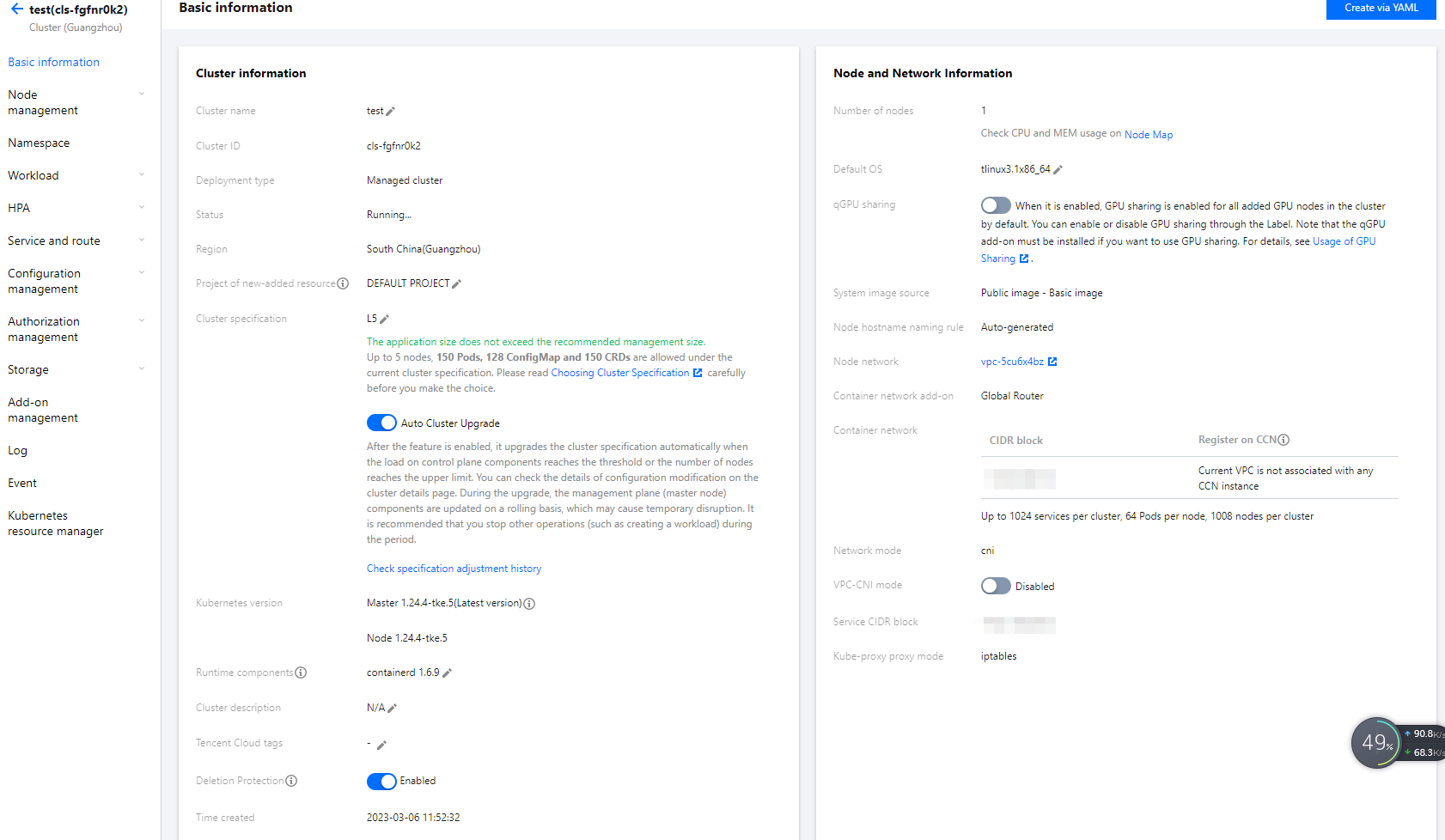快速创建一个标准集群
最后更新时间:2024-12-11 17:47:11
本文向您介绍如何使用容器服务快速创建一个容器集群。
步骤1:注册腾讯云账号
步骤2:在线充值
腾讯云容器服务 TKE 针对不同规格的托管集群,会收取相应的集群管理费用,以及用户实际使用的云资源费用。关于收费模式和具体价格,请参阅 容器服务计费概述。本文中我们创建的是“托管集群”,该模式下您依然要为集群的工作节点、持久化存储以及服务绑定的负载均衡等服务付费。购买前,需要在账号中进行充值。具体操作请参考 在线充值 文档。
步骤3:服务授权
步骤4:新建集群
集群信息
在集群信息页面,填写集群名称、选择集群所在地域、选择集群网络和容器网络,保持其他默认选项,并单击下一步。如下图所示:
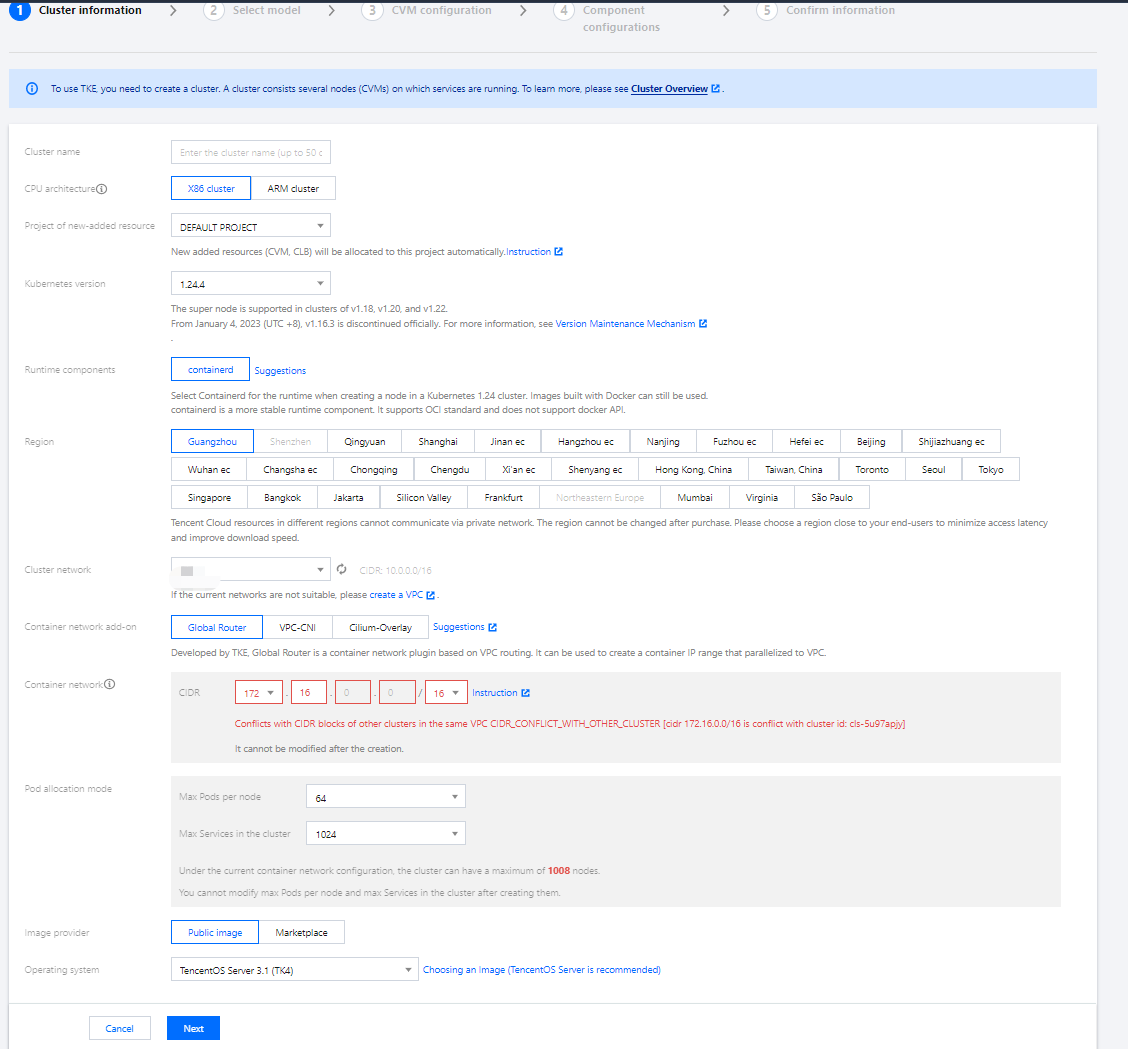

集群名称:输入要创建的集群名称。本文以“test”为例。
所在地域:选择与您最近的一个地区,例如我在 “深圳”,地域选择 “广州”。
集群网络:为集群内主机分配在节点网络地址范围内的 IP 地址。这里我们选择已有的 VPC 网络。
容器网络:为集群内容器分配在容器网络地址范围内的 IP 地址。这里我们选择可用的容器网络。
选择机型
在选择机型页面,确认计费模式、选择可用区及对应的子网、确认节点的机型,并单击下一步。如下图所示: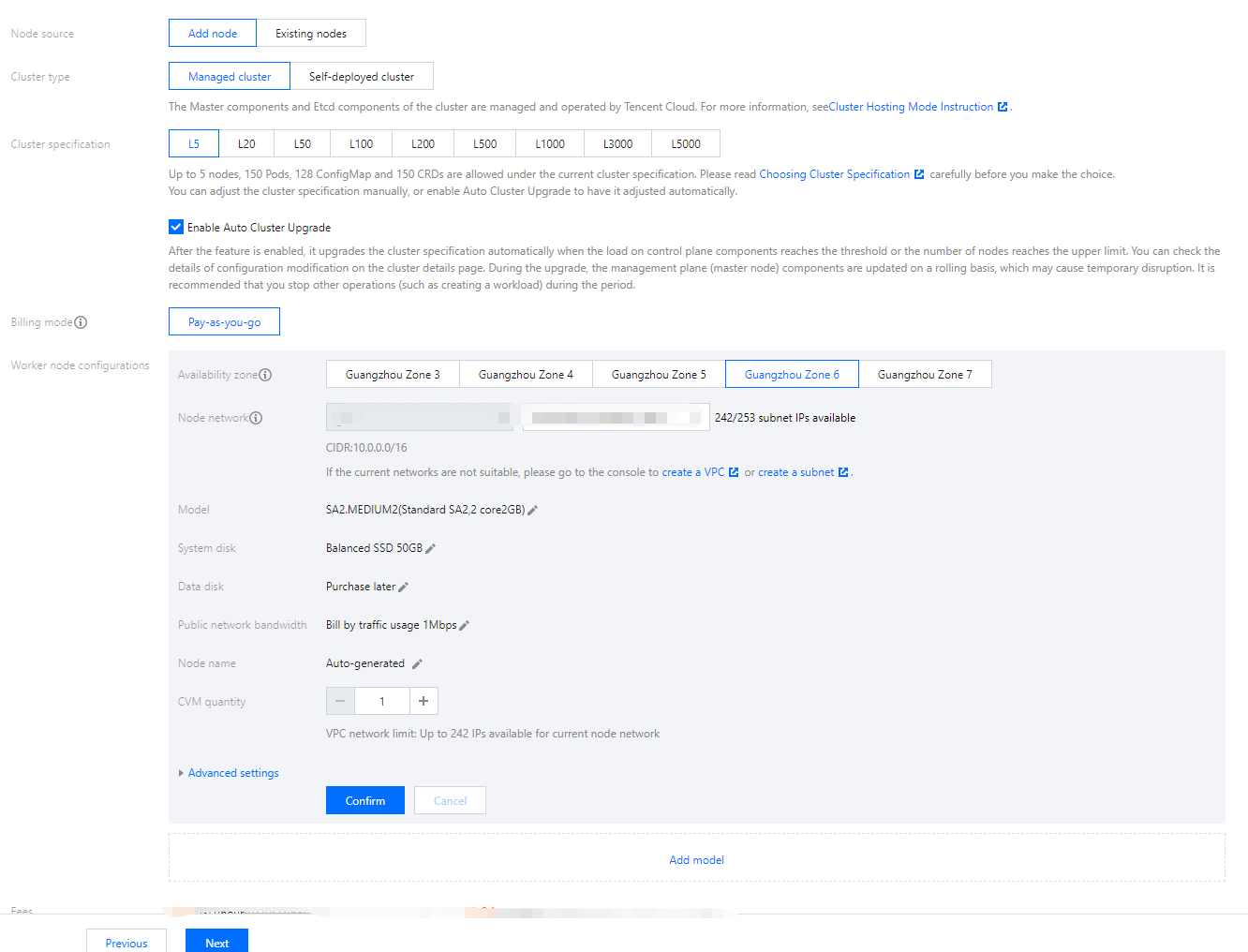

节点来源:提供新增节点和已有节点两个选项。这里我们选择 “新增节点”。
集群类型:提供托管集群和独立集群两种集群模式选择。这里我们选择 “托管集群”。
集群规格:提供多种集群规格。这里我们选择 “L5”。
计费模式:提供按量计费的计费模式。
Worker 配置:该模块下只需选择可用区及对应的子网并确认节点的机型,其他设置项保持默认。
可用区:这里我们选择 “广州六区”。
节点网络:这里我们选择当前 VPC 网络下的子网。
机型:这里我们选择 “SA2.MEDIUM2(标准型SA2,2核2GB)”。
云服务器配置
在云服务器配置页面,选择登录方式,其他设置项保持默认,并单击下一步。如下图所示: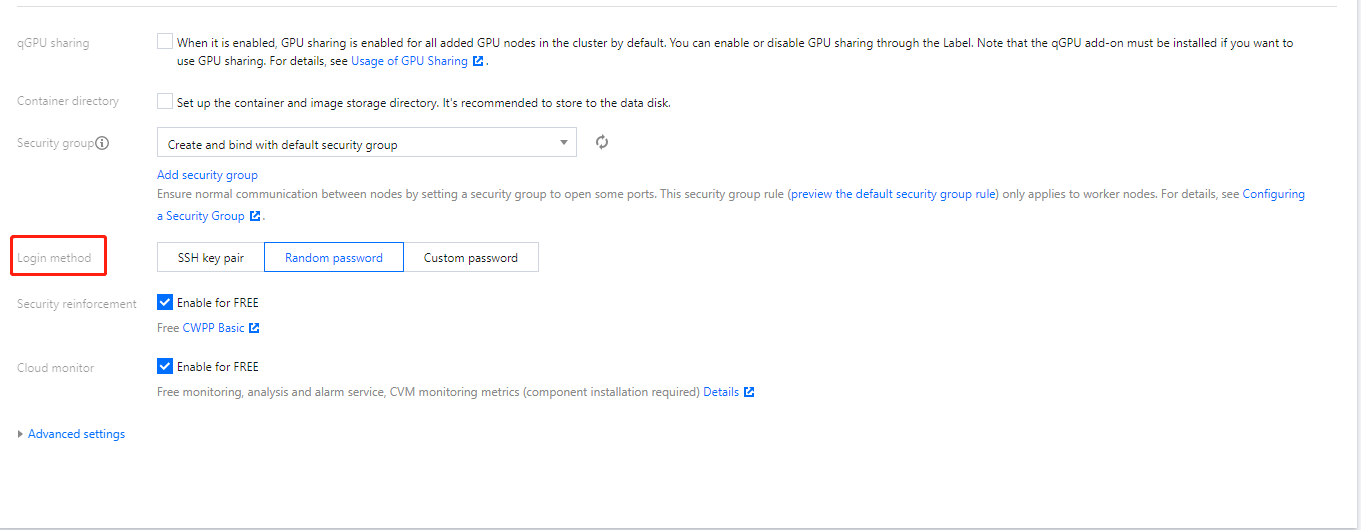

登录方式:提供立即关联密钥、自动生成密码和设置密码三种登录方式。这里我们选择 “自动生成密码”。
组件配置
在组件配置页面,组件包含存储、监控、镜像等,您可按需选择。若无需安装,可单击下一步。这里我们选择不安装组件,其他设置项保持默认。
信息确认
在“信息确认”页面,确认集群的已选配置信息和费用。当您阅读并同意容器服务服务等级协议后,单击完成。如下图所示: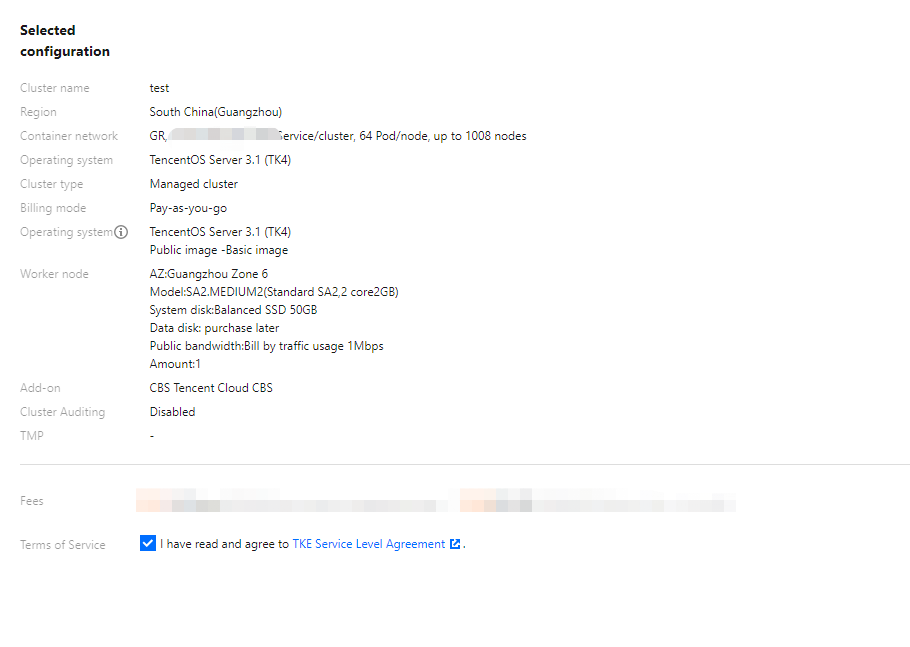

步骤5:查看集群
步骤6:删除集群
集群启动后即开始消耗资源,为避免产生不必要的费用,此步骤向您介绍如何清除所有资源。
1. 选择左侧导航栏中的集群,在“集群管理”页面选择需删除集群所在行右侧更多 > 关闭集群删除保护。如下图所示:

2. 选择集群所在行右侧更多 > 删除。如下图所示:

3. 在删除集群弹窗中确认信息后,单击确定即可删除集群。
后续操作:使用集群
通过本文,您已经了解如何在腾讯云容器服务中创建和删除集群。在已创建的集群中,您可以设置工作负载和创建服务。常用的任务包括:
遇到问题?
文档反馈


